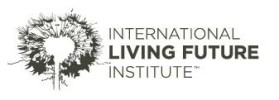ACCESSIBILITY POLICY
An organization’s Accessibility policy must include commitment to adhere to the Principles of Universal Design and the Americans with Disabilities Act (ADA) Standards for Accessible Design or a relevant international equivalent (e.g., the Premises Standards in Australia).
As part of the Accessibility policy, organizations must document the protocols in place for:
- Employee accommodation requests and
- Employee feedback on the organization’s accessibility practices and systems.
Additionally, the policy must include protocols for sharing the organization’s available accessibility services a) during employee onboarding and b) through reminders to all employees at least annually.
APPLICABILITY
Indicator metrics apply to all of the following groups (see definitions in General Clarifications):
- Employees
- Contract workers
- Interns
APPROACHES TO ENHANCING WORKPLACE ACCESSIBILITY
Living Future acknowledges that accessibility needs are expansive and variable due to great diversity of human bodies and minds and that enhancing accessibility will require ongoing practice, continual improvement, and awareness of individual employee needs. One of the most important things an organization can do is invite and integrate feedback as it continues to increase accessibility and inclusion in the workplace.
For the purposes of Just, workplace accessibility includes three aspects: physical accessibility, digital accessibility, and attitudinal awareness.32
Physical Accessibility: Factors such as overall considerations of the workplace building and access points, accessibility of internal workplace facilities and amenities, accessibility of signage, accessible design of individual workstations, and considerations around low-stimulation spaces.
Digital Accessibility: Factors such as providing assistive technology devices and accommodations, website accessibility, and creating accessible communications.
Attitudinal Awareness: Factors related to workplace culture, policies, training, and regular assessment of practices and systems with an emphasis on accountability and continuous improvement.
The following list represents examples of accessibility approaches in each aspect:33-35
- Physical Accessibility
- Conduct an overall accessibility assessment of the physical workspace;
- Complete ADA Checklist for Existing Facilities;
- Make changes to the physical workspace to support and accommodate employee needs;
- Provide a variety of work equipment (e.g., desks and chairs) that can accommodate different needs; and
- Provide a stipend for remote employees to set up their own accessible work environments.
- Digital Accessibility
- Conduct a comprehensive accessibility assessment of workplace technology;
- Complete Web Content Accessibility Guidelines Checklist;
- Encourage staff to become certified in digital accessibility;
- Add accessibility software to all computers or shared equipment; and
- Provide communications in multiple formats.
- Attitudinal Awareness
- Provide training to all members of the workforce about the importance of engaging people with disabilities and how to engage;
- Establish an employee resource group for employees with disabilities and allies to connect, educate, and work for organizational change;
- Engage in external advocacy for greater accessibility within the industry; and
- Ensure relevant operations and HR staff are trained in handling disability accommodations so employees are not required to disclose disabilities to their managers or team members unless they wish to do so.
Organizations may identify different approaches that are equally applicable. Living Future encourages organizations to select and implement accessibility approaches that are most meaningful and impactful based on their own context. See Resources for further resources on this topic.
UNIVERSAL DESIGN
The 7 Principles of Universal Design (UD) were developed in 1997 by a working group of architects, product designers, engineers, and environmental design researchers, led by the late Ronald Mace at North Carolina State University.36 Organizations can employ the Principles of UD as they make workplace design decisions, develop policies and protocols, determine which technological tools to introduce, and more.
The seven Principles of Universal Design comprise:37
- Equitable Use: The design is useful and marketable to people with diverse abilities.
- Flexibility in Use: The design accommodates a wide range of individual preferences and abilities.
- Simple and Intuitive Use: Use of the design is easy to understand, regardless of the user’s experience, knowledge, language skills, or current concentration level.
- Perceptible Information: The design communicates necessary information effectively to the user, regardless of ambient conditions or the user’s sensory abilities.
- Tolerance for Error: The design minimizes hazards and the adverse consequences of accidental or unintended actions.
- Low Physical Effort: The design can be used efficiently and comfortably and with a minimum of fatigue.
- Size and Space for Approach and Use: Appropriate size and space is provided for approach, reach, manipulation, and use regardless of user’s body size, posture, or mobility.
WORK ENVIRONMENT
For the purposes of Just, work environments include the spaces (physical or otherwise) where members of the organization’s workforce complete tasks associated with their roles. Note that while groups, such as board members, are not explicitly included in this Indicator, the organization’s commitment to an accessible work environment should extend to all contexts, including board engagement.
____________________________________________________________________________________________________________________________________
32 Employer Assistance and Resource Network on Disability Inclusion. (n.d.). Creating an Accessible and Welcoming Workplace. Retrieved January 6, 2023, from https://askearn.org/page/creating-an-accessible-and-welcoming-workplace.
33 Dance, A. (2022, October 1). Top 10 Disability Workplace Accommodations: How Does Your Company Measure Up? Diversability. Retrieved January 6, 2023, from https://mydiversability.com/blog/2022/10/1/top-10-disability-workplace-accommodations-how-does-your-company-measure-up.
34 Job Accommodation Network. (n.d.). The JAN Workplace Accommodation Toolkit. Retrieved January 6, 2023, from https://askjan.org/toolkit/index.cfm.
35 Employer Assistance and Resource Network on Disability Inclusion. (n.d.). Neurodiversity in the Workplace. Retrieved December 18, 2023, from https://askearn.org/page/neurodiversity-in-the-workplace.
36 Centre for Excellence in Universal Design. (n.d.). The 7 Principles. Retrieved September 26, 2023, from https://universaldesign.ie/about-universal-design/the-7-principles.
37 Ibid Centre for Excellence in Universal Design.



